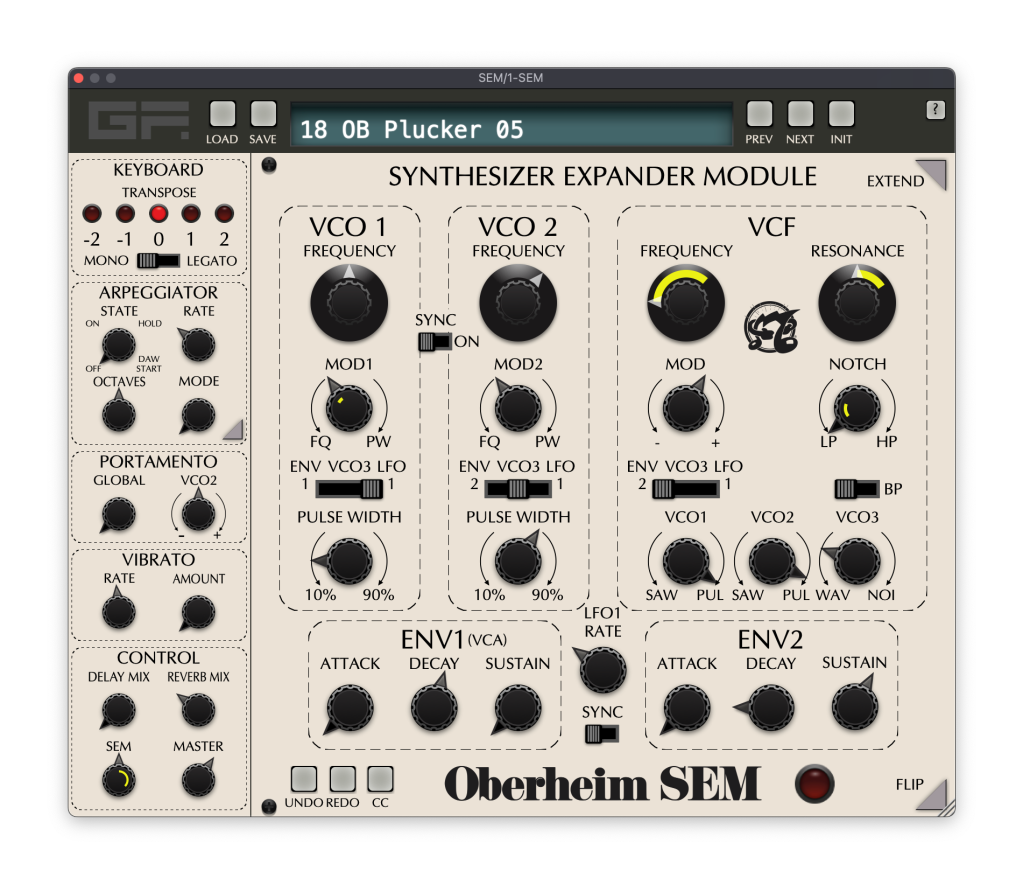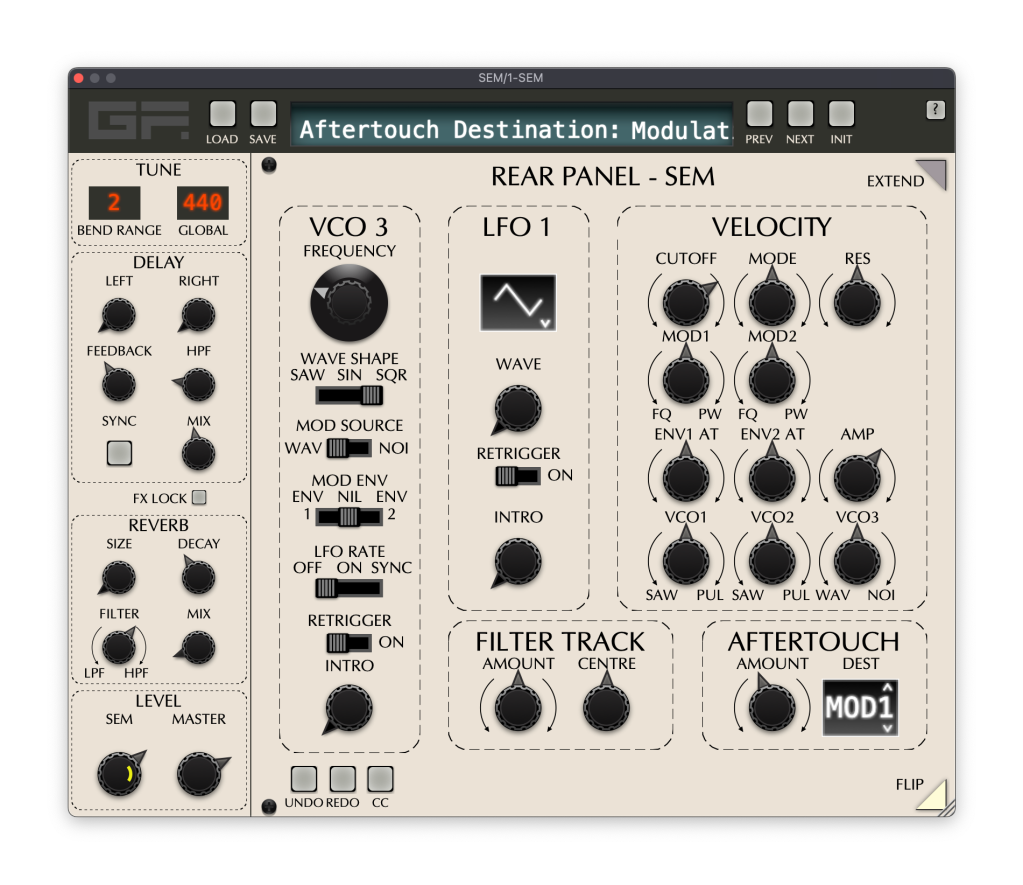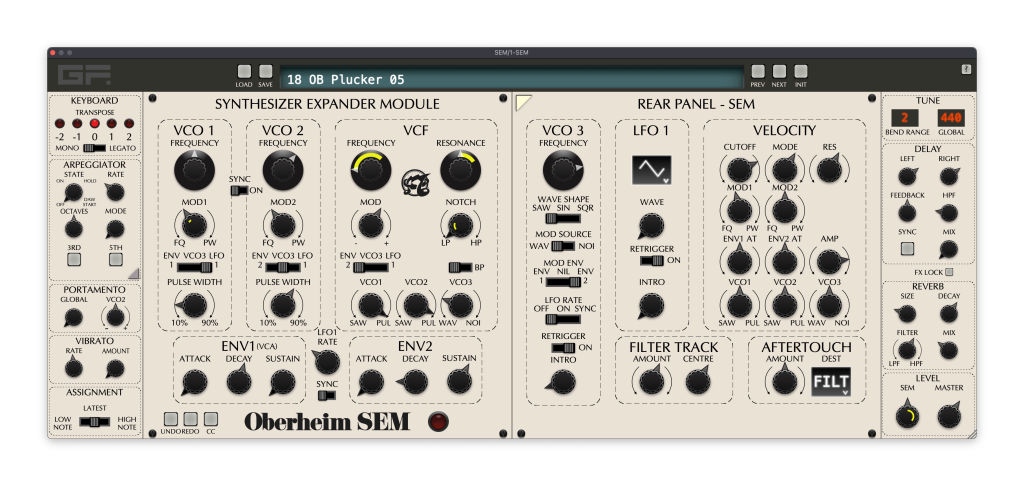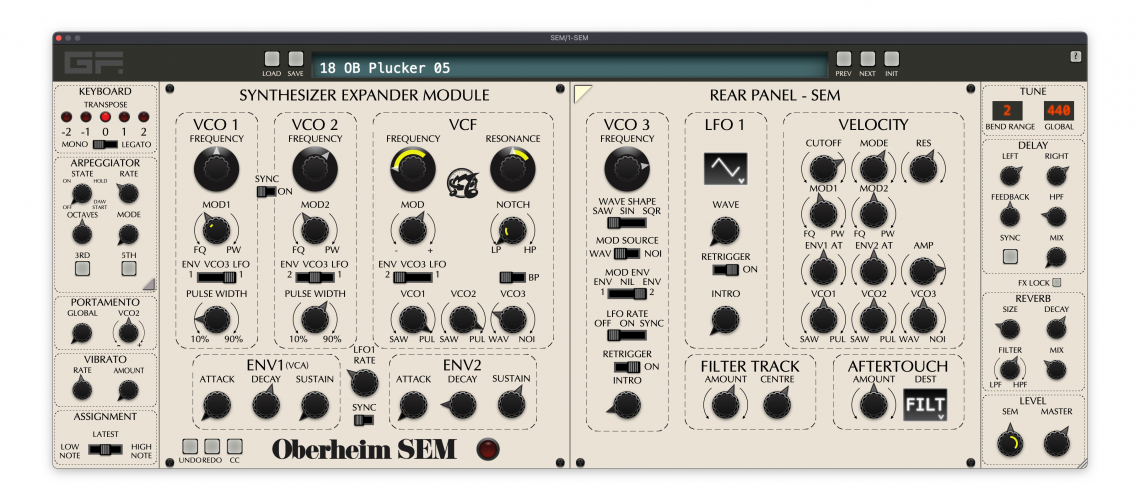In 1974, lunar modules were landing in quick succession on the moon – and the Synthesizer Expander Module (SEM-1) landed here on Earth. Developer GForce turned to creator Tom Oberheim and 80s Oberheim veteran Marcus Ryle for input on their software recreation – and it shows. This is a unique, very analog-y feeling software instrument. It’s simple, elegant – and at 30 quid, a no-brainer.
We are getting, let’s be honest, way too many recreations of classic gear right now. But the SEM-1 deserves some special attention. First, that compact design is just liberating in how accessible it makes all its parameters – in 2022 as much as in 1974. It’s just a simple, accessible beauty, in this age of instruments that have tons of layers and modulation and whatnot. Second, unlike a number of other instruments we’re getting these days, the SEM has not been a frequent target for software emulations. The ones we have gotten tend to fall short of producing some of the original’s sound idiosyncracies. The Tom and Marcus endorsement here seems fitting. (Yeah, fortunately, synth nerd endorsements seem to be more choosy than certain athletic endorsements. Still waiting for those Happy Meals to turn me into an Olympian.)

GForce passes along this story from Tom of how the SEM came to be:
Even in 1973/1974, developing a synthesiser was a major undertaking. But by starting out making just the SEM, without all the other complications that are part of making a complete keyboard synthesizer, the process was made easier. The plan was simply that the SEM would be an accessory product to be used with a synthesizer made by some other company.”
The overall design of the SEM was done by Jim Cooper and myself. I came up with the feature set and user interface and Jim designed much of the circuitry. In addition, Dave Rossum of E-Mu systems helped with the VCO design and Dennis Colin of ARP designed the multimode filter. Little did I realize at the time how critical the SEM would be to the later success of Oberheim, when in 1975 I utilized the SEM to create the Oberheim 2-Voice and 4-Voice synthesizers.
Here’s Tom:
I’ve been playing with the GForce recreation, and it really does feel that using GForce’s SEM is like loading a 70s monosynth into your modern PC or Mac. It just oozes character in each section. I don’t have an original here to compare side by side, but based on what I know of the instrument, they’ve at least given you the sense that not a single knob will fall flat or sound bland.
From the original, you get:
- Two VCOs with pulse and sawtooth
- Two attack / decay / sustain envelope generators (you kids today with your ADSR)
- One LFO
- Multi-mode filter – the real SEM signature, with variable controls everywhere
It’s all about that filter section. Instead of one vanilla lowpass filter, you can dial between low pass, notch, and highpass (or flip the bandpass switch). Plus check the ability to use the second envelope generator or VCO3 or the LFO, more continuous per-oscillator controls.
GForce absolutely nailed the sound of the Oberheim filter here. Actually, my one real gripe here is the absence of an FX version of the plug-in so you can route in audio. (For that, check Arturia’s Filter SEM, which features a gate sequencer and more refined UI. Filter SEM is great, but at the moment I’m more partial to the GForce sound – it just seems to get more of those analog nonlinearities. So – SEMEM, then, please, GForce?)
And in this rendition, they’ve added some modern niceties, taking advantage of the fact that it is now no longer the 1970s:
- VCO3, which you can use as an audio-rate LFO … so yes, now you can do FM
- Tempo-syncable LFOs
- Map velocity and aftertouch to performance controls, with a surprising set of modulation options, all designed in the “everything is a dial” paradigm of the original
- Rather nice reverb and delay
- Sequencer and arpeggiator, because of course everything has that now…


It’s really the VCO3 that seals the deal for me. The two-oscillator SEM is lovely and simple, but limiting – with a third oscillator and the ability to do a little bit of exotic modulation, it’s just perfect.
I do wish we had tuning options, but as it’s a monosynth, it’s not too hard to do that externally.
The funny thing is, the “expansion” in the SEM makes this basically a pretty ideal plug-in – because any additional modulation or keyboard control (or whatever control you want) can come from your environment. It seems it’ll be particularly fun to load into modular hosts (think Bitwig Studio, Reason, VCV Rack, etc.).
But even if the SEM was meant to be an add-on, its design remains delightfully succinct and playable. It’s just one that’s great fun to play with. Now, that being said, you should absolutely consider GForce’s OB-E v2; I had both at my disposal during testing, and there are lots of reasons to go for the OB-E’s expanded feature set depending on what sound you’re imagining. Grab the SEM if you really crave this design and you’re short on simple monosynths. Think about getting the OB-E first if you want the same sonic and interaction features, but in a massive 8-voice polysynth. Of course, having both makes for a nice, Oberheim-y balance in your life.
If you do have both, the SEM presets work in the OB-E, too.
They’ve done a lot of work on presets, too, with over 400 from the likes of Dave Spiers, Graeme Rawson, and Tom Wolfe, all experienced with the original instrument.
Do we need to bring back everything from the 70s? Please, no. No to shag carpeting. Yes to Apollo. SEM is an Apollo moon landing. Both Oberheim recreations are welcome. Map up a controller properly, and enjoy.
SEM:
https://www.gforcesoftware.com/products/sem/
macOS 10.15+ (native Apple Silicon + Intel) / Windows 7+
AAX VST2 VST3 and standalone plus AU for Mac
Getting started:
Lastly, some demos:
And do check the OB-E if you want some octaphonic action; it’s also on sale – see some recent enhancements:
https://www.gforcesoftware.com/products/ob-e/
Don’t believe in software? Well, then, while I love these, I never said I wasn’t still dreaming of this…




